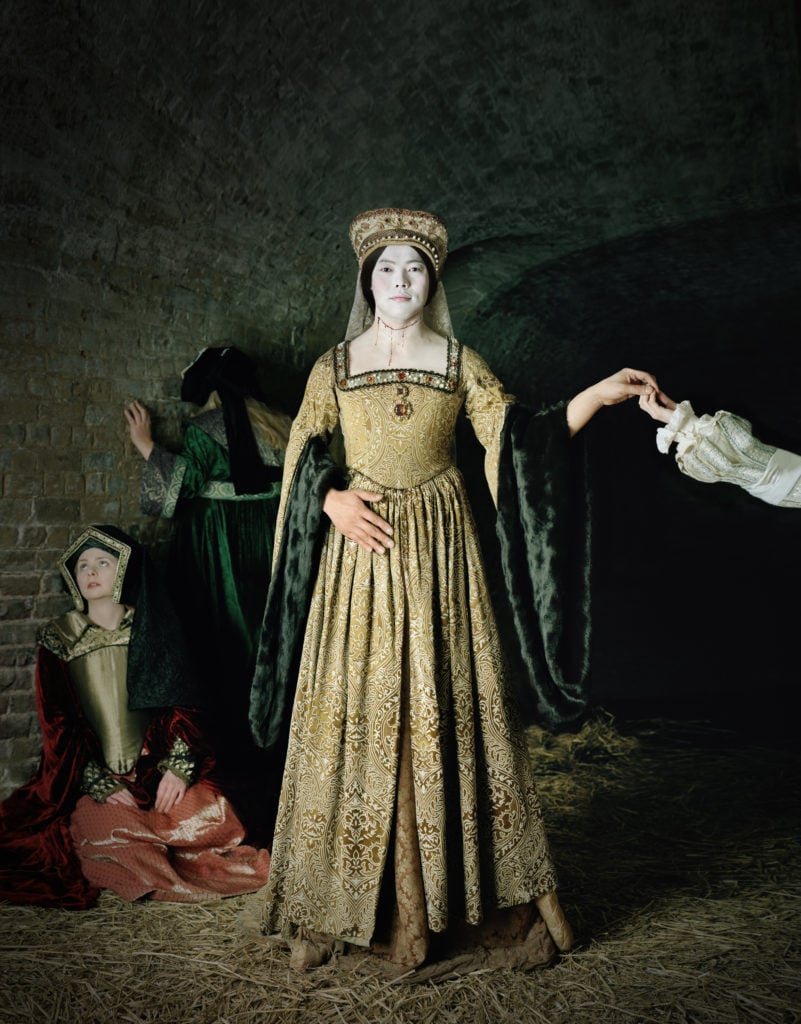Art World
Rare Portrait of English Queen Anne Boleyn Identified Using Facial Recognition Software
But two known images of the ill-fated queen turned out not to be the real deal.

But two known images of the ill-fated queen turned out not to be the real deal.

What to say about Anne Boleyn, the alluring queen who made Henry VIII lose his head, metaphorically speaking, and ended up literally losing hers?
The conniving queen—considered a veritable femme fatale by many, and a feminist victim by others—is currently at the heart of the television adaptation of Hilary Mantel’s bestseller Wolf Hall. The show conveys the real-life intrigues that took place in the Tudor Court during Anne Boleyn’s ambitious ascent to the throne of England, and her dramatic demise.
But, despite the numerous research projects and historical fictions written about her, the figure of Anne Boleyn remains an enigma, not least because all her effigies were destroyed in the aftermath of her beheading in 1536, in an attempt to appease the king.
A mere handful of portraits allegedly survived the all-encompassing destruction. However, only one of them is currently undisputed: a lead medal dating from 1534 owned by the British Museum in London. The veracity of the rest of her portraits is widely contested. Yet surprises keep surfacing.
Professor Amit Roy-Chowdhury from the University of California, the Telegraph reports, has taken the 1534 effigy and compared it to several portraits using state-of-the-art facial recognition software, with spectacular results.
The expert analyzed a portrait held in the collection of the Bradford Museums and Galleries in West Yorkshire and has come to the conclusion that the painting, thought to have depicted Henry VIII’s third wife Jane Seymour, most likely depicts the ill-fated Boleyn instead.
To complicate matters even further, Roy-Chowdhury has also run the software on two much-admired portraits of Boleyn and found that they do not match with the coin effigy, suggesting that they might not depict her after all.
The first of these, a late 16th-century copy of a 1533 portrait of Boleyn, hangs in London’s National Portrait Gallery. The second, housed at Hever Castle in Kent—the childhood home of the tragic queen—is also thought to be a copy of a portrait made in Tudor England.
Roy-Chowdhury’s research was presented earlier this week at the American Association for the Advancement of Science annual conference in California, not exactly an arty environment. “I had no idea about what art history really was,” Roy-Chowdhury said. “My last interaction with art was probably some time in middle school.”
Inevitably perhaps, a number of skeptical reactions from art historians and experts soon followed.
“[Most] portraits of Anne Boleyn (including those at the National Portrait Gallery) were produced many years after her death and are versions of earlier lost portraits,” Dr Tarnya Cooper, chief curator at London’s National Portrait Gallery, said in a statement sent to artnet News. “In this instance it is hard to see how facial recognition technology is relevant as these portraits were always intended to represent Anne, but were not painted from the life.”
Roy-Chowdhury—perhaps preempting criticisms—also called for caution. “What the computer provides at the end is another source of evidence into the discussions that have been going on about these questions,” he opined. “It should not be construed that the computer knows the answer.”
This is not the first time that cutting-edge technology shakes deep-seated historical assumptions. Last October, 3D scans of the remains of King Tutankhamun revealed that, far from the idealized version of him immortalized for posterity in his burial mask, the young pharaoh was a sickly youth and had a prominent overbite.